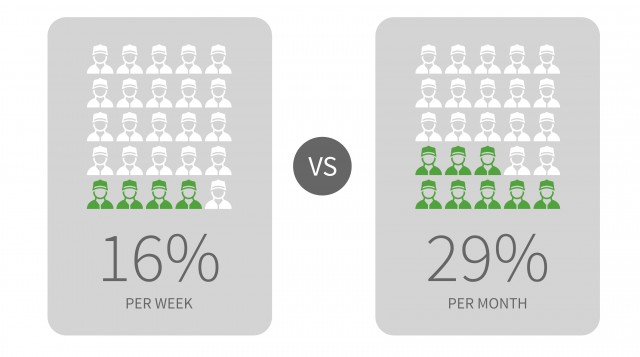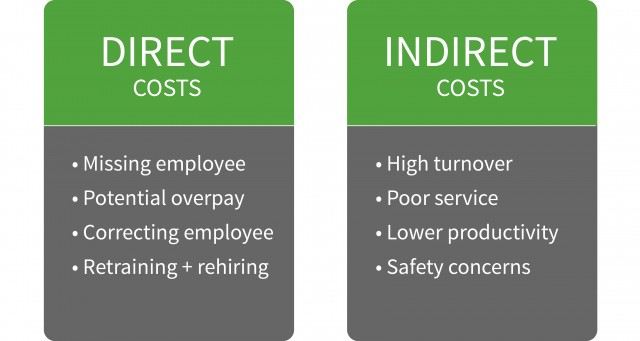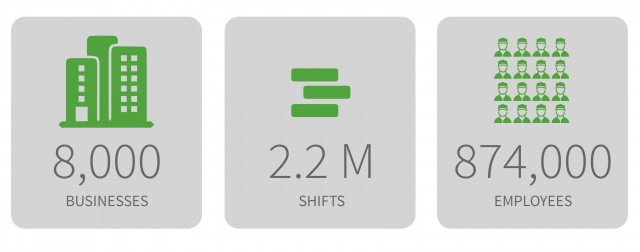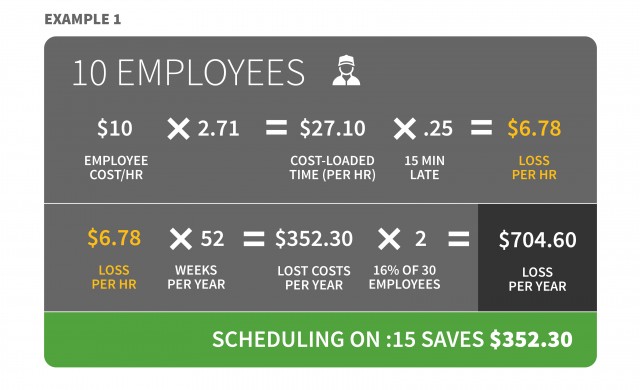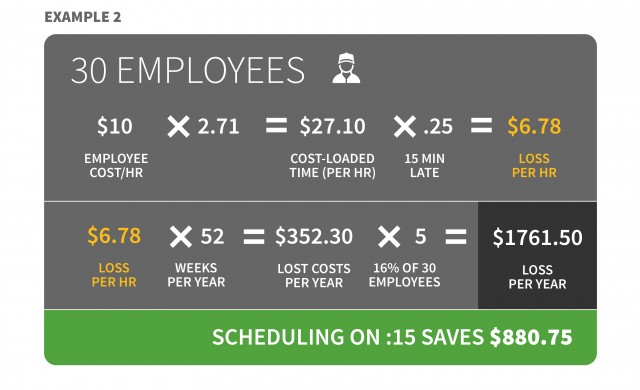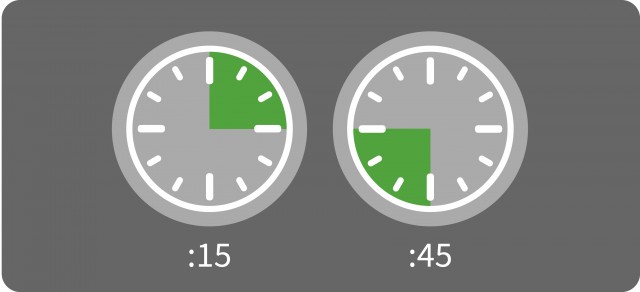A Data-Backed Strategy For Reducing Employee Tardiness
Try When I Work for free
Business owners of all sizes rely on their employees to not only work but actually become the “face” of their business to both current and potential customers. Their attitude, enthusiasm, and resourcefulness may be the critical difference between success and failure. When that business face is stressed or nonexistent, the business suffers and can quickly fail. Ultimately, employee lateness or “tardiness” may come in lots of shapes and sizes.
In an effort to help businesses succeed, the team at When I Work dug into lateness by hourly employees to see if we could give business owners some experimental tools to try to solve, and ultimately, reduce the many costs associated with this for their business.
Invest in employee scheduling software, you can boost productivity at your organization and use the time you save to grow other areas of your business.
Lateness & Costs Associated
Lateness is systemic and impacts all industry sectors. CareerBuilder conducted a survey in 2016 across 10,000 employees and hiring managers and found that:
-
16% of workers reported being late to work once a week the entire year
-
29% of workers reported being late to work once a month the entire year
In another study for Human Resources Executive Online, researchers found one particular department store where 80% of the sales staff was on probation due to lateness.
Costs associated with lateness can be broken down into direct and indirect for the business. Direct cost includes things like covering the missing employee (potentially overtime pay), manager time to correct/discipline the late employee, retraining/rehiring if the employee is fired for lateness, etc. Indirect costs included higher turnover across business, poor quality of goods and services provided, lower productivity across entire staff, and potentially safety concerns.
Estimates for costs range from:
-
$3,600 per hourly employee per year (CIRCADIAN’s “Shiftwork Practices”, 2005)
-
2.71 multiplier by hourly rate for employee or “Cost Loaded Time” (“The Cost of Employee Tardiness”, 2012)
-
30% to 75% of an hourly worker’s annual salary to replace her upon leaving (either quitting or fired due to lateness) (“Dilemmas Faced by Hourly Workers”, 2011)
As a business owner, you know the bottom line is critical to your business’s success. Reducing the costs around lateness and having to rehire and retrain staff can help keep the business profitable and growing. If you could control some of these costs simply by implementing a new way of thinking about the forced rigidity found within hourly scheduling, would you try it?
Shift Your Perspective – How Much Does :15 Matter Really?
We started with a hypothesis. Would scheduling shifts on the :15, :30, and :45 make any impact on the actual number and percentage of lateness of employees?
At the time of the test, When I Work had 8,000 customers with employee counts ranging from 1 to 100+ employees. During January to July 2014, those paying customers generated almost 400,000 published shifts. (Published in our world means that those shifts were actually OK’d by a manager and pushed out to employees.) We also excluded any shifts where the employee was less than 7.5 minutes late.
Here is what we observed:
-
When I Work customers who scheduled on the :15 per shift saw a 8.3% difference in lateness when compared to :00, :30, and :45 shifts.
-
84% of the “least” late shifts were on the :15 and :45 when looking at shifts starting at 6:00 am and ending the day at 12:00 am
-
75% of the “least” late shifts were on the :15 when looking at shifts starting at 6:00 am and ending at 5:00 pm
-
86% of the “least” late night shifts between 6:00 pm and 12:00 am were when scheduling on the :45
Depending on which calculation you want to try to use for reducing direct or indirect costs associated with lateness, you see that with an 8.3% decrease in lateness, you could potentially get a 50% reduction in costs associated (using the 16% late employee figure each and every week).
If scheduling on the :15 can reduce lateness by 50% when looking at all of those that are late (16%) consistently, you might also be able to reduce the other calculation of $3,600 per year down to $1,800. Sure, those are not huge figures for IBM, 3M, or Ford, but for small to medium sized businesses, reducing those kinds of costs times the number of employees you have can really add up quickly.
We here at When I Work are not interested in giving you an actual calculation of lateness costs, but an overall understanding based upon hundreds of thousands of shifts, that direct and indirect costs associated with lateness are real, and if you can reduce those costs, you will be bringing more value to your business. The data and insights from our testing reveals a pattern that is worth exploring and potentially experimenting with in your particular business.
Go Experiment – Give The Quarter Shift Method a Try
Most attendance management methods use the same formula of disciplinary action for the employee, but if you could reduce absenteeism by scheduling on the quarter hour, you can see a huge reduction in cost as well as increase employee retention.
Often times, scheduling has been handed down from manager to manager, or owner to owner, without necessarily any insights or data to back up those decisions. This experiment is easy to implement especially if you have employee scheduling software, so don’t get caught up in the trap of the status quo.
If you do try the Quarter Shift Method, let us know how it goes and if you see any differences.
Start your free 14-day trial of When I Work! Click here to start scheduling your employees today.

Editor’s Note:
This post was co-authored by Dennis Still. Dennis is our Lead Business Analyst & Data Hacker at When I Work.
The graphics in this post were created by Brandon Lord. Brandon is our Marketing Graphic Designer at When I Work.
References:
Keren Peters-Atkinson, CMO, Madison Commercial Real Estate Services, “The Cost of Employee Tardiness”, October 10, 2012, http://mondaymornings.madisoncres.com/the-cost-of-employee-tardiness/
Joan Williams, “Dilemmas Faced by Hourly Workers”, Human Resource Executive Online, July 11, 2011, http://www.hreonline.com/HRE/view/story.jhtml?id=533339737
CIRCADIAN, “Absenteeism: The Bottom-Line Killer”, 2016 (pdf download)
CIRCADIAN, “Shift Work & Absenteeism: The Bottom Line Killer”, October 14, 2014, http://www.circadian.com/blog/item/43-shift-work-absenteeism-the-bottom-line-killer.html#.VKqtpHl0x9A

